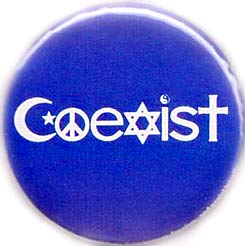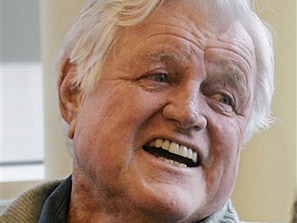
I like to think that one of the gifts in the age to come will be enjoying lap time with my cat and maybe the company of other animals, but Sister Mary Martha will have none of that. No way, no how, the blogging sister says. (Motto: “Life is tough. Nuns are tougher.”) But even she acknowledges that many Christians think otherwise, and so they do. A recent article in Christianity Today, which I mentioned in my last post, offered a range of opinions.
Jewish thought is just as ambiguous. (Look here and here, for examples.) Jewish commentators hint at a possible dividing line: The Aristotelian-leaning rabbis, such as the great medieval scholar Maimonides, are less inclined to see a place in heaven for animals. But the more mystically inclined, such as those who follow Kabbalah, think animals will be in heaven, in part because their rabbis taught that souls transmigrated—that human souls not ready for heaven enter the bodies of animals (ideally kosher ones, of course). But that’s another issue.
Muslims, on the other hand, generally agree that the Koran teaches animals will be in paradise, part of the enjoyment God promises to his faithful ones. The Islamic concept of “Jannah,” or paradise, differs dramatically from the Christian, but I’m struck by the reasoning here. Animals, Muslims say, do what they were created to do by God, and so they “submit” to him–an important word, since that’s what the word “Islam” means. From that perspective, it makes that sense that God would admit them to paradise. That is, if I’m interpreting this teaching correctly, Muslims say God allows animals into heaven, rather than excludes them, precisely because they don’t have the choices we do, and he will be merciful.
I don’t know if we’ll reunite with pets and other animals in heaven. I hope so: they would fit with the joy.
I know, I know: there are all kinds of logical objections. If animals go to heaven, for instance, will we have to put up with mosquitoes and cockroaches for eternity? (C.S. Lewis helpfully pointed out in the Problem of Pain that “if the worst came to worst, a heaven for mosquitoes and a hell for men could very conveniently be combined.”)
Maybe the bigger question here is why I—why we—are so taken by this question. Why does this matter? Perhaps the way we think about animals offers clues to how we think about the creation and even the creator. I want my old cat in heaven because he was worth something, part of God’s good creation, and I like to think that God is generous even to cats and dogs, not to mention lambs and wolves who can enjoy a peaceful meal together.
I imagine heaven would give animals the same essential gift we Homo sapiens hope for: to live fully as intended. Dear departed Stache will get to live out his perfected “catness,” whatever that means, much as I look forward to fully live out my perfected “humanness.”
One last thought: If we embrace the idea of a God who cares for his creatures even into eternity, shouldn’t we care about them as well in the here and now?



 Jordan’s arrival has kindled new interest in the 105-year-old congregation, which counts 55 households as registered members. The synagogue was full during last Friday’s Rosh Hashanah service, with at least 120 worshipers.
Jordan’s arrival has kindled new interest in the 105-year-old congregation, which counts 55 households as registered members. The synagogue was full during last Friday’s Rosh Hashanah service, with at least 120 worshipers. Pat Griggs of Johnson City, a self-described activist, traces her “call” to a quarter century of interfaith involvement.
Pat Griggs of Johnson City, a self-described activist, traces her “call” to a quarter century of interfaith involvement. These goals sound praiseworthy, but the URI has been the object of criticism from its start. Various religious groups, including the Roman Catholic and Eastern Orthodox churches and several evangelical Christian bodies, keep the URI at arm’s length. (For examples, go
These goals sound praiseworthy, but the URI has been the object of criticism from its start. Various religious groups, including the Roman Catholic and Eastern Orthodox churches and several evangelical Christian bodies, keep the URI at arm’s length. (For examples, go 




 This is a story of two stories. One story is about redemption, freedom and new life from the hand of God. The other is about – well, much the same. The question is how much one story can be shared and changed to tell the other.
This is a story of two stories. One story is about redemption, freedom and new life from the hand of God. The other is about – well, much the same. The question is how much one story can be shared and changed to tell the other.